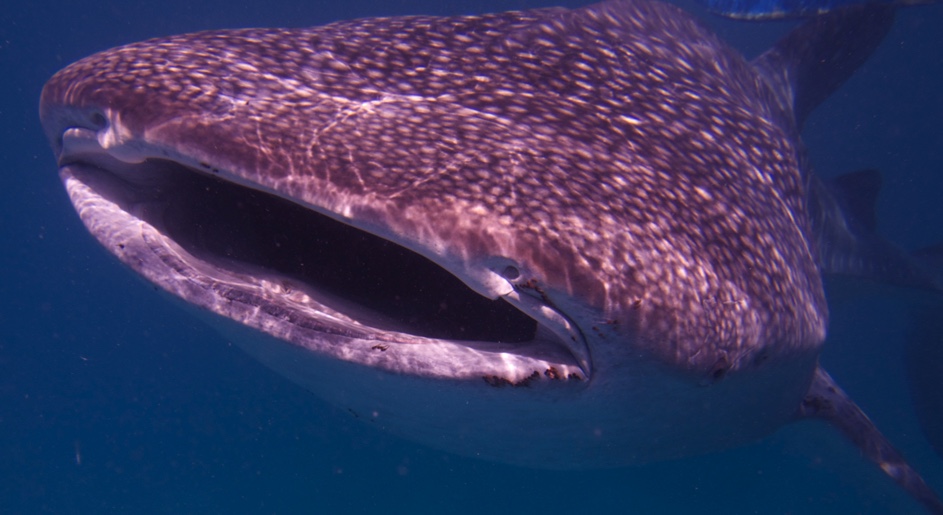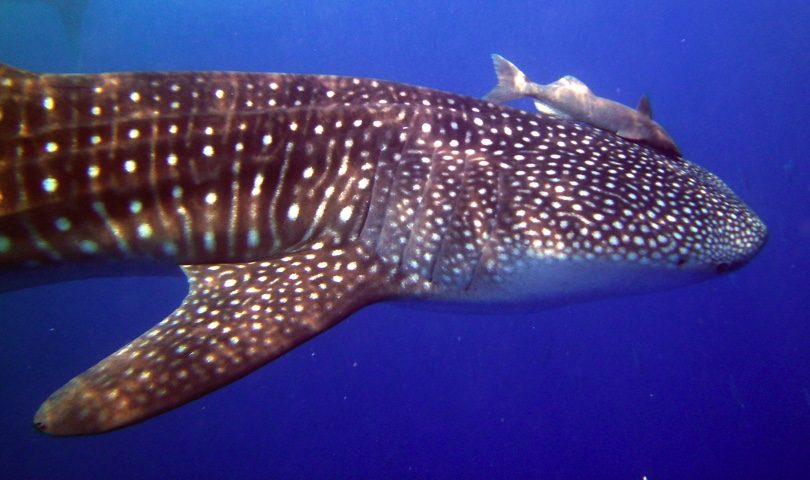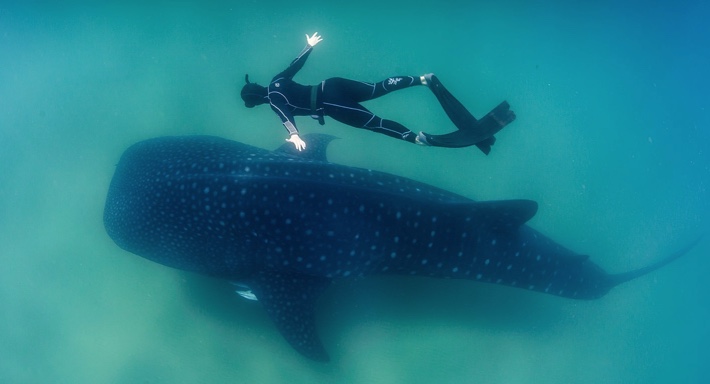Anglers are known to exaggerate the size of the fish they catch, but today we’re covering a fish whose size doesn’t need any help. The whale shark is the world’s biggest fish, and August 30 is its own day. Happy Whale Shark Day!

So, first off, let’s be clear—this animal is not a whale, but it is a shark. That makes it a fish, not a mammal, and it is clearly the world’s biggest fish (in second place is the basking shark, barely half the size of the whale shark). Mature whale sharks are the size of a school bus, as long as 50 feet and as heavy as 40 tons. Big monsters, eh?
But, no, they aren’t monsters. Whale sharks are gentle creatures—big to be sure, but docile to the extreme. They live in tropic seas around the globe and generally inhabit shallow water and swim near the surface, frequently encountering humans. A tourist industry has grown around seeing and swimming with whale sharks, which often enjoy a little scratch behind the, uh, gill slits.
Whale sharks are ancient creatures, based on the fossil record, but have been known as living specimens for only two centuries. Females give birth to live young, dozens at a time. Various descriptions state that the animals “migrate,” but it seems to me that a better description is that they swim continuously, often covering long distances. Their lifespan mimics their physical size—up to 70 years. They filter small animals out of the water column, just like the baleen whales (and hence their name), eating as much as 50 pounds per day. But unlike filter-feeding whales, whale sharks also can pump water actively through their gills, causing a suctioning effect to capture small fish and other organisms.

Individual whale sharks are covered with light colored markings, mostly round, in patterns that remain constant over time and allow individuals to be identified. A catalogue of more than 7,000 individuals has been created, but overall population size is much larger, perhaps 100,000 or more, according to IUCN.
However, IUCN also estimates that whale sharks have decreased in abundance from pre-exploitation levels. Populations in the Indo-Pacific are down about two-thirds, and in the Atlantic about one-quarter. Because the species likes shallow water and does not avoid humans, overfishing and vessel strikes have caused the population decline. Therefore the species is judged as “endangered” by IUCN and classified as an Appendix II protected species by CITES.
I’ve looked extensively to find the origin of International Whale Shark Day, but with no luck. The day, it seems, is much like the animal it honors—silent and mysterious. Tired of the cliched expression “the elephant in the room”? I recommend trying “the whale shark in the aquarium!”

References:
Australian Department of Agriculture, Water and the Environment. Whale Shark (Rhincodon typus). Available at: https://www.environment.gov.au/marine/marine-species/sharks/whale-shark.
Pierce, S. J. and B. Norman. 2016. Rhincodon typus. The IUCN Red List of Threathened Species. Available at: https://www.iucnredlist.org/species/19488/2365291#text-fields.
World Wildlife Fund. Whale Shark. Available at: https://www.worldwildlife.org/species/whale-shark.

